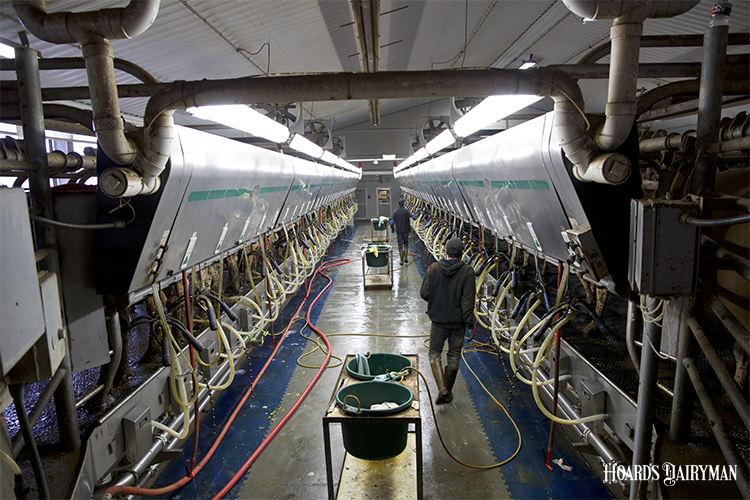
The potential to develop and publish U.S. genetic evaluations for milking speed is being explored by USDA Animal Genomics & Improvement Laboratory (AGIL) and the Council on Dairy Cattle Breeding (CDCB). Why? Many dairy producers actively use milking speed metrics to guide their management, maximize efficiency, and make economic decisions. Conventional herds use milking speed to choose their milking groups and optimize parlor throughput. Herds with automated or voluntary milking systems may use it for important economic decisions like choosing how many robots to buy and manage their herds with the goal of maximizing milk per robot.
Producer input and other research is required to clearly define and identify relevant data types and quality assurance measures to integrate milking speed data into the existing U.S. evaluation system and implement genetic selection for this new trait.
How do we measure milking speed?
Some in-line milking meters can provide milking speed information in a few different ways. Milking duration is a commonly cited metric, usually measured from the time the milking cluster attaches to when it comes off. While it is useful information, this is really only a measure of time, not speed.
Speed involves dividing a specific volume over a given period of time. Cows with lower milk yields will have shorter milking durations, so this may not be the best metric for maximizing parlor efficiency and profits. Some meters can provide fractional milk flow rates, where the amount of milk given in different increments of time (like the first 0 to 15 seconds, 15 to 30 seconds, 30 to 60 seconds, and 60 to 120 seconds) are calculated. These flow rates can vary greatly across milkings, and they give more information about udder preparation protocols and milker performance than they do about the individual cow’s milking speed. Often, meters can provide milking durations and milk weights, which can easily be used to calculate a milking speed measure that is a fairer description of the individual cow.
Can we genetically select for milking speed?
While the U.S. does not yet have genetic evaluations for milking speed, at least 18 other countries have a similar evaluation for producer consideration in breeding decisions. CDCB appointed a milking speed evaluations task force in October 2021 to review the possibility of implementing genetic evaluations for milking speed in all dairy breeds and to make recommendations to the CDCB board of directors on the necessary steps to make this happen.
The first challenge is in understanding the quantitative milking speed phenotypes produced by milking meters and how they are affected by system and biological effects. System effects refer to the influence of factors like pulsation ratios, milking interval, milking frequency, meter manufacturer, and calibration protocol effects.
Biological effects include factors like breed, parity, age, and stage in lactation, as well as the relationship between milking speed and somatic cell score and clinical mastitis. There is some evidence that somatic cell score and milking speed are positively correlated, suggesting that milking speed may be an intermediate optimum trait. This needs to be further explored. A research agreement is under development between AGIL and Dairy Records Management Systems to answer these unknowns.
Seeking producer input
The milking speed evaluations task force has developed a producer survey to help determine how a milking speed selection program would provide the most value to dairy producers considering their goals and milking system types. Please consider participating by following this link. All answers will be fully anonymous, but there is an option for producers to provide their name and email to be informed of results and entered into a $50 Amazon gift card raffle. You can contact me at asha.miles@usda.gov with any questions.





